In a recent blog memo to the Teslarati, and also in his live conference call with analysts after the release of the Q3 financials, Elon Musk elaborated on the Mission of Tesla. Musk is a very, very smart man, but we are starting to wonder if he is suffering from tunnel vision. Most of the press already has this problem. In short, Musk and the general media seem to be assuming that the main goal that Tesla has isn’t already being met by other companies. We will argue below that it is, and will continue to be. Furthermore, we will explain why if Tesla wants to build a mass-market car, in this case an electric car, the current design it uses will not work. However, Tesla can meet its objectives. We will explain how.
Tesla’s Stated Mission
In our words, Tesla’s goal is to build an enjoyable electric vehicle that sells for entry level luxury car prices (about $35,000) in huge numbers. Musk and Tesla also seem to have limited themselves to the design of this EV. They want a “pure electric car.” That means they cannot copy the Volt and the Fisker Karma, and some BMW i3s and use an on-board power generator that uses a fuel like gasoline, or natural gas. That last part is a shame, because it is one way to bridge the gap now to zero emissions vehicles in huge numbers.
If you want to read an update in Musk’s own words you can read his November 18th update on the Mission of Tesla. In the beginning he states the mission is “to accelerate the advent of sustainable transport by bringing compelling mass market electric cars to market as soon as possible.” Breaking that down into sections, we can focus on two things. Let’s first address the part about the Tesla being ‘compelling.”
“Compelling” means not at all awful and not at all boring. In fact, according my dictionary it means “very interesting; Able to capture and hold one’s attention.” Is a Toyota Corolla “compelling?” It is the leading seller in its segment and it is the world leader in history in terms of unit sales for any vehicle nameplate. Is the Toyota Camry “compelling?” It is the number one selling car in the United States today by fully 10% at about 400,000 per year sold. How about the Toyota Prius? The Prius sells about 240,000 per year (just in the USA), and it is the number one selling green car on Earth, and also has saved more gasoline than all the EVs ever built. The Prius line outsells the entire EV market by about three to one. Here’s the thing; many people don’t think any of these three cars, the leaders on the planet in what cars do, are “compelling.” In fact, auto-writers, auto-readers (as recently as this week on our TN Facebook page) frequently, loudly, and sometimes insultingly call all these cars boring, dull, soul-less and swear they hate them. So Tesla’s mission is not to build a car that the general public will find boring or lackluster. Rather, it wants to build a car people find very interesting that will hold their attention.
Now let’s consider Tesla’s phrase “mass-market.” Here at TorqueNews we know what a mass-market car is. We just listed them above. Now, you might be thinking that Elon Musk isn’t seriously thinking he will sell cars in those kind of number, right? Sort of. Actually, he thinks that in a few years that Tesla might be building more than that. In the conference call he said “If we were to produce 500,000 [cars], we need cell capacity commensurate with that.” So what Elon Musk thinks is that the Gen III car, as it’s called will cost about $35,000 and that it will sell in numbers as large, or larger, than the Camry, which is the highest selling car in the USA. In fact, he thinks Tesla will outsell all of Volkswagen in America in a few years.
Given that goal, an exciting to drive electric car that outsells every other single car in the US, at a price of around $35,000 Tesla has nothing in its current lineup that will get them there. A smaller Model S cannot be scaled down to a size small enough (figure Corolla size) to cost under $35,000. The reason is that the aluminum space-frame construction is simply too expensive. The only vehicles in the world that are made in the fashion the Model S are cars like the new Chevrolet Corvette (about $60K), the Audi R8 (About $90K and up), and some similar supercar designs. Space-frame refers to the style of the chassis, not outer-space by the way. Space frame cars are old-school vehicles that are made with new style materials to achieve extremely low weight, but at a higher cost than conventional “mass-market” cars and crossovers. Nobody, not even the largest and most sophisticated automakers in the world, can build a low-weight, aluminum space frame based car and meet the cost goal Tesla has set.
This all means that if Tesla wants to build a medium sized, low weight, mass-market vehicle it will need to move to high strength steel construction, or perhaps a new aluminum chassis that uses most of the elements of “unit-body” (also called unibody) construction. This is a technique whereby flat, inexpensive sheets of metal are compression formed into the main floor pan, engine supports, suspension mounting points, cabin and front and rear structures. It is fast and it is affordable. And it is the only way cars are made in the world in big numbers. Tesla does not have any experience doing this. Nor does it have an existing chassis it can adopt, or adapt. When Chevy built the Volt it looked to its existing line-up and selected the Cruze as the “donor car”. By using a car it already makes in huge numbers Chevy kept costs down and is able to use a lot of its already existing capacity. This is just one part of Tesla’s problem.
The next part is, well, parts. Tesla does not have a supplier network it can leverage that will enable it to pay the prices that Toyota, Nissan, Ford, and General Motors do for parts. It does already source parts designed and made by other automakers (Mercedes Benz for example), and they might even give Tesla a deal at their own cost for 10,00 or 20,000 vehicles worth of parts as part of a partnership. However, no automaker will do that for 500,000 vehicles worth of parts. They simply can’t afford to. Plus, at that point Tesla is a direct competitor.
At this point we have not even talked about Tesla’s difficulty making a half million batteries per year, or the fact that the drivetrain will cost more than practical for its $35,000 vehicle. If you want to read stories about Tesla’s possible “giga factory” there are many out there. I’m not an expert regarding giga factories. I do know that Tesla has a drivetrain plan and that it is possibly the world’s leading automaker when it comes to electric drivetrains, so let’s assume Tesla can handle the volume. Tesla has never demonstrated an affordable design, so we will have to wait for that breakthrough.
Has Tesla’s Goal Already Been Met By GM and Nissan?
We would argue that if you take the “compelling” and mass market terms loosely they have. GM and Nissan have both sold more EVs than Tesla and they cost less than the target price Tesla has set as its benchmark. If they have not met the standards of compelling and mass market yet, it would seem they have the edge on the next generation of cars. They have the manufacturing technology and they have the parts commonality. Both also have equal experience with regard to the electric motor and every other drivetrain part needed by an EV. The only edge Tesla has is battery technology – sort of. Tesla does not actually make batteries. It uses Panasonic cells. LG makes GM’s. Imagine a technology breakthrough. Battery costs come down, miles per cubic inch of battery goes up and reliability is assured. Who does this help most? Certainly not Tesla. In fact, a development like that could put Tesla out of business. GM and Nissan would immediately have a huge advantage over Tesla. They might also be able to adapt cars like the Cadillac CTS to electric and run Tesla out of the premium EV market.
Tesla can overcome all of these obstacles and it can achieve its mission. All it needs is a partnership with someone like Toyota. Using a Toyota-build chassis and a Tesla-designed drivetrain these two in partnership could take on GM and Nissan. Here’s a pop quiz; Who co-produced mass-market, unibody vehicles in the factory that Tesla now occupies in Freemont California (the NUMMI plant)?
Photo at head of story by John Goreham



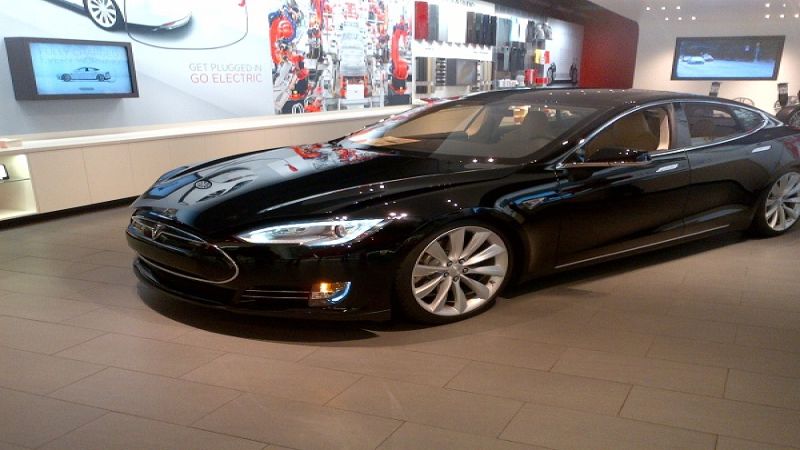




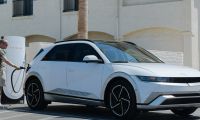
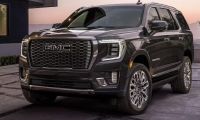
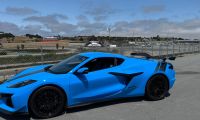
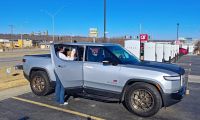
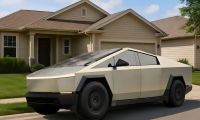
Comments
Compelling Gen III car means
Permalink
Compelling Gen III car means that Tesla will make a $45k+ electric car with 300–500 km range, 135 kW supercharging and a car that handles better than twice as expensive Porsche Panamera. These are the minimum criteria for a compelling car. It is simply a best mid range / cheap luxury car that world has ever seen.
It must beat every Mercedes, Audi and BMW out there in order to be compelling. It will send a world a message, that if you plan to spend more than $25k for a new car, you better buy Tesla.
Note that it is not Tesla's superiority. It is just that Tesla is the first company in the world who seriously tried to build a better car that electric drivetrain enables. Although Nissan and BMW have also shown some initiative towards electric vehicles, still the bulk of their profit comes from ICE cars. So their EV models must be inferior compared their profitable ICE models.
I do appreciate your comments
Permalink
In reply to Compelling Gen III car means by Jouni Valkonen (not verified)
I do appreciate your comments, but Musk himself has defined the Gen III and you are incorrect. He has said $35K, not $45K+. My favorite part of your comments are the conspiracy theory accusation at the end. I don't disagree at all, and I like that kind of cynicism. However, I apply that attitude to all automakers, including to Tesla. Thanks very much for your comments. I appreciate it and TN does as well.
The base price of Model S
Permalink
In reply to I do appreciate your comments by John Goreham
The base price of Model S should have been $59k, but later they cancelled the shortest range version due to lack of demand. Short range electric vehicles just do not sell well (As Leaf has clearly demonstrated) and it is probable that also the Model E will start at 60 kWh upwards.
This means that also the base price is higher. Current battery technology just do not allow 60 kWh model priced at $35k, because Tesla must also consider wide profit margins. Even $45k is stretching, because battery cost alone is around $15k, but I think that it is doable. Therefore I doubt Elon Musk's claims.
All excellent points. And
Permalink
In reply to The base price of Model S by Jouni Valkonen (not verified)
All excellent points. And remember the "Base Price" does not include a navigation system. Are you really going to buy a $65K car without Nav? No. The truth is the Model S vehicles promoted and actually built are almost all about $100K. I have never seen one in person that was not over $100K, and all of the test cars sent to major automotive press were over $100K.
Wow.. I find this diatribe to
Permalink
Wow.. I find this diatribe to boarder on insanity... The Tesla will go the way of the Tucker and other car manufacturers that attempted to drive and control the market in a radical new direction. Let's face it..While Tesla is producing a visually appealing product, I don't believe that a market segment large enough to justify the manufacturing of 500,000 cars exists in the U.S.. A 100% stand alone " plug in" has little to no"real world" application outside of major cities and close in urbane interface.And for that application, Tesla can stand in line behind all the major players. I find Elon Musk to be driven by ego rather than vision. Take his battery jet for example. What's this cat smoking? I want some... However, I've never met the man in person. It will interesting to see how far his vision quest takes him... An interesting read...
It is silly to compare Tesla
Permalink
In reply to Wow.. I find this diatribe to by Parks McCants
It is silly to compare Tesla to Tucker. Tucker sold only 101 cars. Tesla sold 200x that already. Even in the WORST case scenario, Tesla can just remain a luxury brand. And even in the worst of worst cases, Mercedes said they won't let Tesla fail. So in worst case scenario, Tesla will become a brand of Mercedes, In middle case scenario Tesla would continue being a luxury car manufacturer and in best case scenario they will be become one of the big guys.
Keep in mind Tesla is not limiting sales to US and is sold world wide. That said the market will be big enough for 500k cars even in the US. I remember when I had a smartphone 10 years ago, I told everyone in the future everyone will be using a smartphone. People laughed at me saying people only use cellphones to talk on the phone and that the market is not big enough for smartphones. Fast forward to today, what are you using?
For the record, 80.7% of population lives in urban areas according to 2010 census. One of the key issues observed in studies is people significantly overestimate how many miles they travel. 4.3% of travel is over 100 miles. 0.1% of travel is over 200 miles. (Then don't forget there is airplanes for long distance travel as well). Add to the fact that Tesla plans to have 10 minute charging on the Gen III and will have infrastructure fully built out, suddenly the dynamics change completely.
Many Tesla Model S owners already use Tesla as their only car. It is very practical in the real world.
And I would not bet against Musk, people said launching a rocket at fraction of the cost of NASA was impossible years ago. Fast forward to today, Musk is doing just that with Space X. So until he reveals a design for the electric jet, we will have to see. My guess is he is going to use Metal-Air batteries. They have 10x the energy density of current batteries in conjunction with ultracapacitors.
I mean keep in mind, Solar Impulse flew around the world just on solar power and batteries alone.
Tesla had 3 goals to meet.
Permalink
Tesla had 3 goals to meet.
First goal was to show that a high range EV is possible. (Gen I - Tesla Roadster)
Second goal was to build the best mass produced car in the world that is an EV and make EVs desirable (Gen II - Model S)
Third goal was to produce a mass market EV that has good performance and compelling. (Gen III - Model E)
One thing to note though is the Gen III like Gen II consists of 2 vehicles. Also the Gen III will be a completely different platform. Musk said this already.
As far as parts goes, the moment Tesla gets their production to 500k, that would not be an issue anymore.
Now in terms of building cars out of aluminum. The costs are not as high as you think. Ford for example is making their new 2015 F150 truck out of aluminum.
In terms of sales, Nissan and GM sold more cars because they were out longer with mass production.
This year Chevy Volt sold 16,760 cars during the first 3 quarters.(helped by their price cut in august), Nissan Leaf during first 3 quarters of this year sold 16,076. Tesla Model S in first 3 quarters sold 15,450. So even though this is Tesla's first year of mass production and the car costs a 2-3x more, it still sold just as much as the others. (In 1H of this year Tesla was actually #1 selling EV)
And people make a big mistake when they make the assumption that Panasonic makes the battery. Panasonic makes the battery cells, but that is only half the equation. The battery itself is make by Tesla. If higher density cells come out, Tesla would still have the advantage because they have a better battery system. On top of that, GM and Nissan are bloated and lack focus. Tesla can easily get to market out before them. And then there is the final factor. BRAND. Tesla knows that in the end game, others are going to catch up technologically. That is why Tesla is building out their brand and making their own network to offer the best customer experience. They know that if they offer the best customer experience, people will continue buying from them. Tesla also committed itself that every new car will have a new wow factor to it. I mean lets look at it this way, if you were buying a 35k EV and had a choice between GM, Nissan or Tesla. Which would you buy if they had the same specs? Kind of a no brainier.
You are correct that the
Permalink
In reply to Tesla had 3 goals to meet. by Weapon (not verified)
You are correct that the brand is hugely valuable for Tesla now. However, given a choice between 3 EVs and if I have to pick one, all same specs, I choose Nissan. I would skip the GM for personal reasons and I would skip the one that might stick me with a Saab type situation, where it is out of business and I can't get service or a decent resale.
I do think you are a little too much of a fan of Tesla to see that GM and Nissan are already out in front of Tesla with regards to the Gen III vehicle. They ARE selling a sub-$35K electric car. Now their only challenge is to make it compelling. Thank you very much for contributing your comments and views. They are very insightful and well laid out.
Can you send me a link that
Permalink
In reply to Tesla had 3 goals to meet. by Weapon (not verified)
Can you send me a link that says Ford IS making the F-150 with an aluminum space frame in 18 months (2015)? We have reported that Ford considered it, but so far there has been no plan to actually do that. If Ford were to already have committed to that the AL suppliers would already have seen huge orders and the machine tool suppliers as well. The 2015 Ford F-150 is already designed and in final durability testing. If it is to be aluminum we would know. Attach a link. I may be behind this issue and need to catch up if so. Thanks
You're right..it is a no
Permalink
In reply to Tesla had 3 goals to meet. by Weapon (not verified)
You're right..it is a no brainer. I would buy the car from the company that will still exist 10 years down the road. The large automakers have withstood the test of time. They have faced the worst economic climates in the history of the world and they have pulled through. Tesla has never really proven anything prior to the Model S and the company's future really rides on the shoulders of the devout EV segment...which is a small one. They arent going to exist forever selling high end EVs without being absorbed into some other company that has money to burn when times get tough or problems come up. Tesla cannot rely on an endless demand so once they have supplied those who want a Model S right now, sales are going to plunge without introducing new models that will have a real impact on their sales numbers...numbers which are low enough that the company wont publish them.